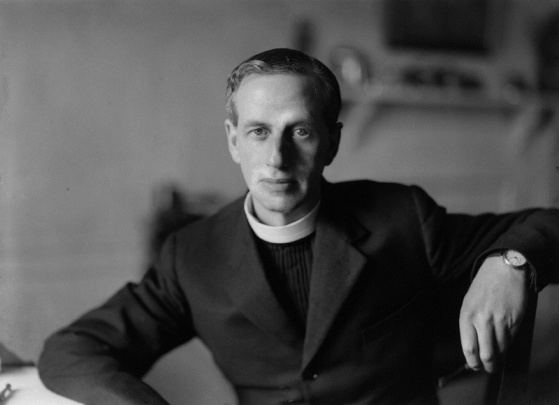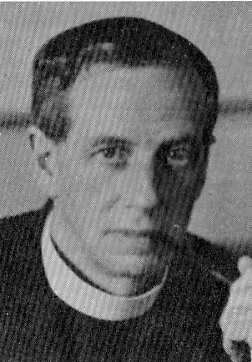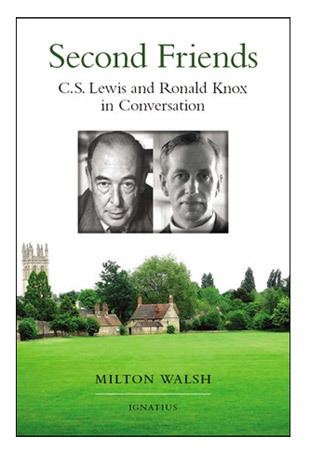Religion Roman Catholic Profession Theologian Nieces Penelope Fitzgerald Ordination 1918 Siblings Dilly Knox, E. V. Knox | Title Monsignor Role Author Nationality British Name Ronald Knox | |
 | ||
Resting place Church of St Andrew, Mells51°14′31″N 2°23′26″W / 51.241928°N 2.390525°W / 51.241928; -2.390525 Books The belief of Catholics, The Viaduct Murder, The creed in slow motion, The three taps, In soft garments Similar People G K Chesterton, Dorothy L Sayers, Anthony Berkeley Cox, Freeman Wills Crofts, Dilly Knox | ||
Ronald knox liberty party instrumental character theme song
Ronald Arbuthnott Knox (17 February 1888 – 24 August 1957) was an English Catholic priest, theologian and author of detective stories. He was also a writer and a regular broadcaster for BBC Radio.
Contents
- Ronald knox liberty party instrumental character theme song
- ronald knox liberty party
- Early life and education
- Church of England
- Catholic Church
- Radio hoax
- Selected works
- Novels
- Short stories
- Collaborative works by the Detection Club
- References

ronald knox liberty party
Early life and education
Ronald Knox was born into an Anglican family in Kibworth, Leicestershire, England. His father was Edmund Arbuthnott Knox, who became the Bishop of Manchester.
The young Knox was educated at Eaton House and Eton College, where he took the first scholarship in 1900 and Balliol College, Oxford, where again he won the first classics scholarship in 1905. Knox, a brilliant classicist, won the Craven, the Hertford and the Ireland scholarships in classics, as well as the Gaisford Prize for Greek Verse Composition in 1908 and the Chancellor's Prize for Latin Verse Composition in 1910.

In 1910, he became a fellow of Trinity College, Oxford. Here, as a devout Anglo-Catholic, he became a key member of Maurice Child's fashionable "set". He would not begin tutorials until 1911 and so accepted the job of classics tutor to the brother of a friend at Eton—to Harold Macmillan (who would be called "C" both in Knox's Spiritual Aeneid and in Evelyn Waugh's biography of Knox)—in the sabbatical, although he was later dismissed by Nellie Macmillan for being a high-church Anglican.
Church of England

Knox was ordained an Anglican priest in 1912 and was appointed chaplain of Trinity College. During World War I, he served in military intelligence. In 1915, Cyril Alington, who had been master in college at Eton during Knox's time there, and was now the headmaster of Shrewsbury School, invited Knox to join the teaching staff at Shrewsbury to fill in for a former colleger at Eton, his friend Evelyn Southwell, who had joined the British Army. Knox was long remembered at Shrewsbury as the highly dedicated and entertaining form master of Vb.
Catholic Church
Knox resigned as Anglican chaplain in 1917 when he became a Catholic. In response to Knox's conversion to Catholicism, his father cut him out of his will. In 1918 Knox was ordained a Catholic priest and in 1919 joined the staff of St Edmund's College, Ware, Hertfordshire, remaining there until 1926. He explained his spiritual journey in two privately printed books, Apologia (1917) and A Spiritual Aeneid (1918). Knox's conversion to the Catholic faith was influenced in part by the English writer G. K. Chesterton, before Chesterton himself became Catholic. When Chesterton was received into the Catholic Church in 1922, he in turn was influenced by Knox.

Knox wrote and broadcast on Christianity and other subjects. While Catholic chaplain at the University of Oxford (1926–1939) and after his elevation to a monsignor in 1936, he wrote classic detective stories. In 1929 he codified the rules for detective stories into a "decalogue" of ten commandments (see Golden Age of Detective Fiction). He was one of the founding members of the Detection Club and wrote several works of detective fiction, including five novels and a short story featuring Miles Bredon, who is employed as a private investigator by the Indescribable Insurance Company.
Directed by his religious superiors, he retranslated the Latin Vulgate Bible into English, using Hebrew and Greek sources, beginning in 1936. His works on religious themes include: Some Loose Stones (1913), Reunion All Round (1914), A Spiritual Aeneid (1918), The Belief of Catholics (1927), Caliban in Grub Street (1930), Heaven and Charing Cross (1935), Let Dons Delight (1939) and Captive Flames (1940). When G. K. Chesterton died in 1936, Knox delivered a panegyric for his requiem mass in Westminster Cathedral.
An essay in Knox's Essays in Satire (1928), "Studies in the Literature of Sherlock Holmes", was the first of the genre of mock-serious critical writings on Sherlock Holmes and mock-historical studies in which the existence of Holmes, Watson, et al is assumed. Another of these essays, "The Authorship of In Memoriam", purports to prove that Tennyson's poem was actually written by Queen Victoria. Another satirical essay, "Reunion All Round", mocked the fabled Anglican tolerance in the form of an appeal to the Anglican Church to absorb everyone from Muslims to atheists, and even Catholics after murdering Irish children and banning Irish marriage and reproduction.
In 1953 Knox visited the Oxfords in Zanzibar and the Actons in Rhodesia. It was on this trip that he began his translation of The Imitation of Christ and, upon his return to Mells, his translation of Thérèse of Lisieux's Autobiography of a Saint. He also began a work of apologetics intended to reach a wider audience than the student one of his The Belief of Catholics (1927). But all his activities were curtailed by his sudden and serious illness early in 1957. At the invitation of his old friend, Harold Macmillan, he stayed at 10 Downing Street while in London to consult a specialist. The doctor confirmed the diagnosis of incurable cancer.
He died on 24 August 1957 and his body was brought to Westminster Cathedral. Bishop Craven celebrated the Requiem Mass, at which Father Martin D'Arcy, a Jesuit, preached the panegyric. Knox was buried in the churchyard of St Andrew's Church, Mells.
The first biography of Knox, entitled The Life of Ronald Knox, was the work of his friend and literary executor, Evelyn Waugh, and appeared two years after his death. Waugh, a devout Catholic and fervent admirer of Knox's works, had obtained his friend's permission for the task. In 1977 Knox's niece, Penelope Fitzgerald, published a composite biography, The Knox Brothers, which devoted equal weight to him and his three brothers (E. V. Knox, the editor of the humorous magazine Punch, Dillwyn Knox, a mathematician, and Wilfred Knox, an Anglican monk and New Testament scholar). The Wine of Certitude: A Literary Biography of Ronald Knox by David Rooney was published in 2009. This followed two recent studies, Ronald Knox as Apologist: Wit, Laughter and the Popish Creed (2007) and Second Friends: C. S. Lewis and Ronald Knox in Conversation (2008), both by Milton Walsh. A more recent biography setting Knox in the cultural context of his times is Terry Tastard, Ronald Knox and English Catholicism (2009).
Radio hoax
In January 1926, for one of his regular BBC Radio programmes, Knox broadcast a simulated live report of revolution sweeping across London entitled Broadcasting from the Barricades. In addition to live reports of several people, including a government minister, being lynched, his broadcast mixed supposed band music from the Savoy Hotel with the hotel's purported destruction by trench mortars. The Houses of Parliament and the clock tower were also said to have been flattened. Four months later there was considerable public disorder during the General Strike so the possibility of a revolution was real at the time. Because the broadcast occurred on a snowy weekend, much of the United Kingdom was unable to get the newspapers until days later. The lack of newspapers caused a minor panic, as it was believed that this was caused by the events in London.
A 2005 BBC report on the broadcast suggests that the innovative style of Knox's programme may have influenced Orson Welles's radio broadcast "The War of the Worlds" (1938), which it foreshadowed in its consequences. In an interview for the book This is Orson Welles, Welles himself said that the broadcast gave him the idea for "The War of the Worlds".
The script of the broadcast is reprinted in Essays in Satire (1928).
